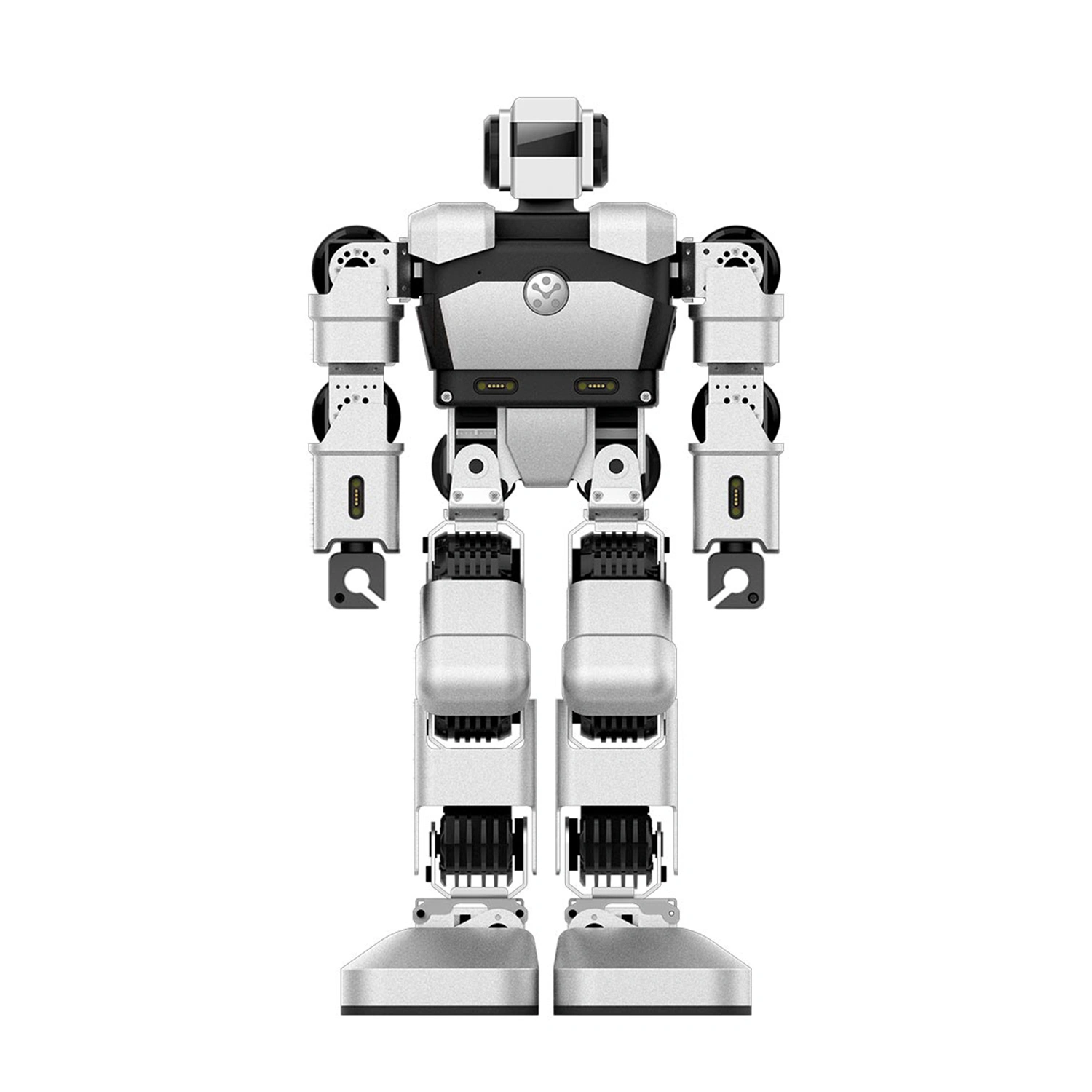Available at Vijay Sales | Hosted on Indian Servers | Call Sales 9953476189 | Trade Enquiry 8700496572 | Service 9910019853

Upto 1yrs* Warranty

Express Shipping

Indian Languages*

Priority Care
CATEGORIES

 Humanoid
Humanoid
Yanshee

 Humanoid
Humanoid
RoboNano 2.0
 Disinfection Bot
Disinfection Bot
Outdoor Disinfection BlackCat
 Disinfection Bot
Disinfection Bot
Indoor Disinfection RoboCop
 Delivery Bot
Delivery Bot
StarButler - Delivery Robot

 Humanoid
Humanoid
Alpha 1E 21

 Humanoid
Humanoid
RoboNano
 Humanoid
Humanoid
RoboJulia

 Humanoid
Humanoid
RoboELF
 Humanoid
Humanoid
RoboDiCaprio

 Humanoid
Humanoid
RoboSlim

Humanoid robots represent a remarkable fusion of robotics and artificial intelligence, designed to emulate human-like characteristics and capabilities. These advanced machines are at the forefront of technological innovation, offering diverse applications in research, entertainment, healthcare, food service, medical implementations, and beyond. Their anthropomorphic design and sophisticated functionalities make them both intriguing and valuable assets in various industries.
Humanoid robots are deployed in diverse fields where their humanoid appearance and advanced capabilities offer unique advantages. In research and development, these robots serve as platforms for studying human-machine interaction, cognitive robotics, and artificial intelligence (AI) algorithms. Their ability to mimic human movements and gestures makes them ideal for exploring new technologies in assistive robotics and rehabilitation.
In healthcare, humanoid robots support patient care by assisting with therapy exercises, providing companionship for the elderly, and even performing basic medical tasks under supervision. Their interactive capabilities can help alleviate loneliness and enhance social interaction in healthcare settings, contributing to improved patient well-being.
Advancements in robotics and AI have propelled humanoid robots to new heights of functionality and realism. Modern humanoid robots feature sophisticated sensors, actuators, and neural networks that enable them to perceive their environment, adapt to changes, and interact intelligently with humans. These robots can recognize faces, understand speech, and respond to commands, creating immersive and personalized interactions.
Humanoid robots are valuable tools for education, allowing students to explore STEM concepts in a tangible and engaging manner. Educational institutions use humanoid robots to teach programming, robotics engineering, and AI principles. Students gain hands-on experience in designing behaviors and applications for humanoid robots, preparing them for future careers in technology and innovation.
In research, humanoid robots contribute to advancing knowledge in fields such as robotics, AI, cognitive science, and human-computer interaction. Researchers study how humanoid robots can assist in tasks ranging from household chores to disaster response, demonstrating their potential impact on society.
Humanoid robots play a significant role in entertainment and media, appearing in movies, exhibitions, and interactive installations. Their lifelike appearance and ability to engage audiences through conversation and performances create memorable and immersive experiences. In theme parks and museums, humanoid robots entertain visitors and educate them about technology and robotics.
Despite their advancements, humanoid robots face challenges such as power consumption, cost, and the complexity of programming human-like behaviors. Engineers and researchers continually innovate to overcome these challenges, improving robot efficiency, durability, and affordability.
The future of humanoid robots holds promise for further integration into everyday life, from personal assistants in homes to collaborators in workplaces. As technology evolves, humanoid robots may become more ubiquitous, offering solutions to societal challenges and enhancing quality of life through personalized assistance and companionship.
When selecting a humanoid robot, consider factors such as intended use, capabilities (e.g., mobility, interaction abilities), programming flexibility, and integration options. Understanding specific application needs and consulting with robotics experts can help determine the best humanoid robot for educational, research, or commercial purposes.
In conclusion, humanoid robots represent a transformative advancement in robotics technology, combining human-like appearance with advanced capabilities to tackle diverse challenges and opportunities. Whether in healthcare, education, entertainment, or research, humanoid robots continue to push the boundaries of innovation and enrich human-machine interaction in meaningful ways.
*Warranty duration differs from model to models. Please check product detail for more information.
** Indian Languages are available on select models. Please check product detail for more information.